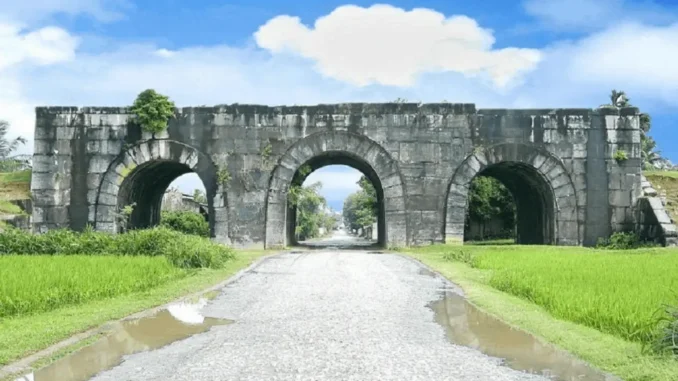
Ho Citadel is a time capsule that stores captivating tales of a very significant era of Vietnamese history. Situated in Thanh Hoa, Ho Dynasty Citadel is widely considered a historical and architectural gem, a true testament to the nation’s rich cultural heritage. From its location and architecture to its historical significance and artifacts, Ho Dynasty Citadel invites visitors to travel back in time.
Location
The Citadel of the Ho Dynasty, which is located in Vinh Long, Vinh Loc District, Thanh Hoa Province, boasts a strategic geographical placement. This advantageous position now translates to one of the most gorgeous attractions in the country, achieving the perfect balance between a majestic structure and picturesque surroundings.
Furthermore, Ho Citadel is surrounded by gorgeous and tranquil scenery. The unspoiled beauty of the landscape is another aspect that attracts numerous tourists to the citadel.
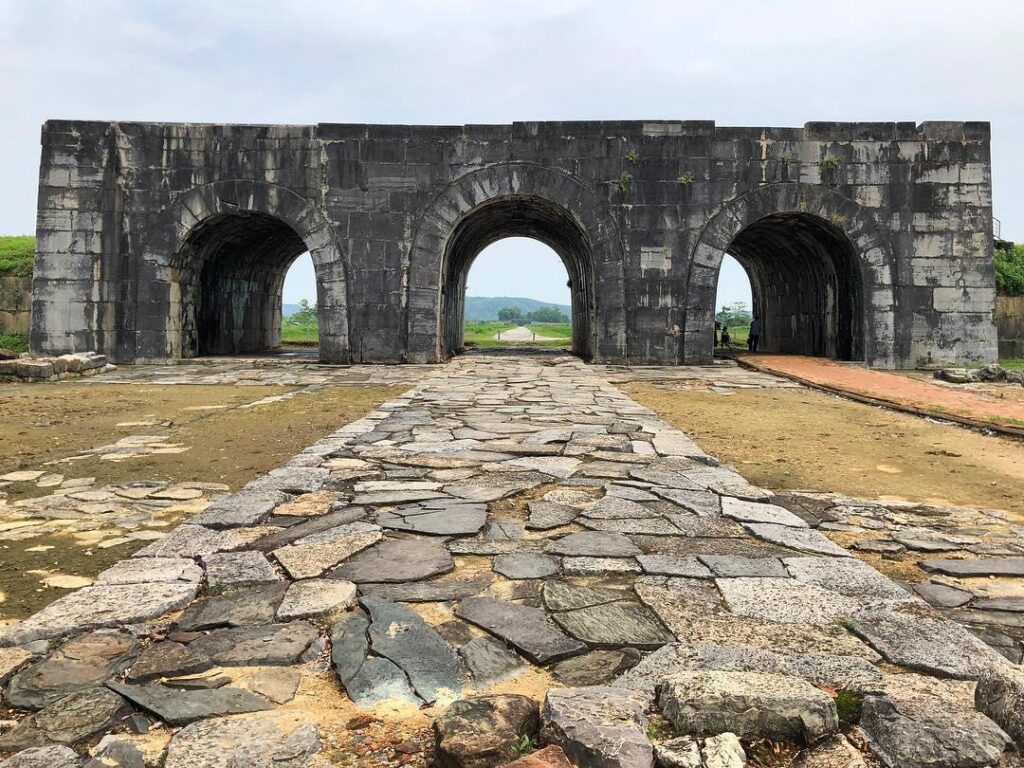
History
The Citadel of the Ho Dynasty was built in 1397 under the supervision of Ho Quy Ly, the very first monarch of the dynasty. The reason behind its construction was a coup. When Ho Quy Ly forcibly took the throne in 1400, he relocated the capital and opened up a new chapter in Vietnam’s feudal era.
As the capital of the country from 1398 to 1407, it acted as the political, economic, and cultural center of North Central Vietnam.
During this time, Ho Dynasty Citadel was a historical witness of a critical period in Vietnamese history.
Architecture
The Ho Dynasty Citadel was built in just 3 months and then continued to be completed until 1402. The terrain here is rugged, with steep mountains and surrounding rivers, both of strategic significance in military defense and promoting advantages in terms of waterway transportation.
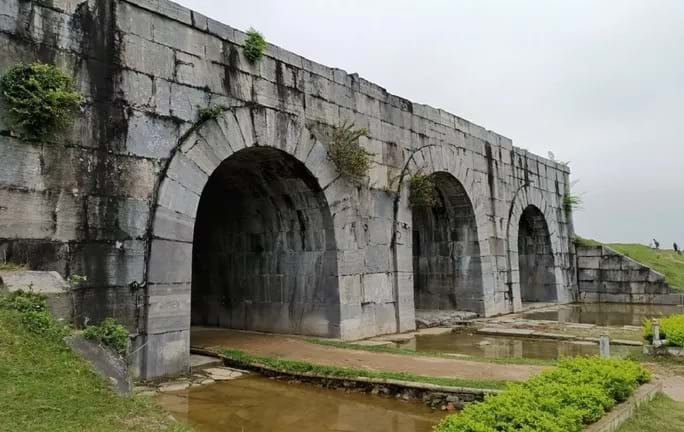
The inner citadel is designed in a rectangular shape with a length of 870.5m from North to South and 883.5m from East to West. The four citadels South – North – West – East are called front – back – left – right respectively. The gates in the inner citadel are built in a rolling arch style with many layers of stone, especially large stone slabs. The Ho Dynasty Citadel has the technical level to build high stone arches. The stones used weigh tens of tonnes and are assembled very naturally, without adhesives, but still exist after 600 years.
Hoa Thanh is designed to be more than 90m wide, 52m wide at the bottom, and 6.5m deep. To maintain the strength of the citadel, the ancients used crushed stone and macadam to line the bottom.

In front of Hao Thanh is La Thanh Court, La Thanh is currently a very large earthen citadel with a height of 6m and a width of 9.2m, with a steep slope on the outside and a gentle slope on the inside. Each step will be 1.5m high, and in some places, it will be paved with gravel for reinforcement. The entire La Thanh was built according to the natural terrain, forming majestic natural walls with the function of protecting the citadel and preventing floods.
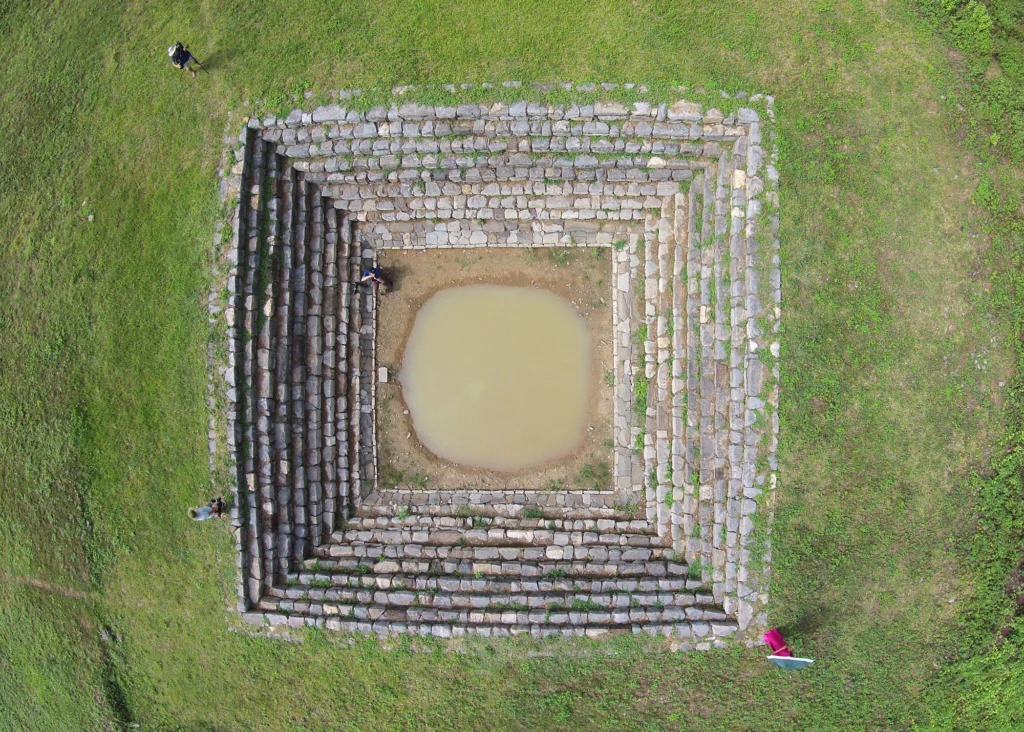
Dan Te Nam was built south of the citadel and inside La Thanh, with an area of 35,000 square meters. This altar is divided into many floors, of which the central floor is 21.7m high. The base of the instrument is about 10.5m high. The central altar is surrounded by three walls.
Collection of artifacts
Ho Dynasty Citadel is not only captivated by its architecture but also by a treasure trove of artifacts kept in mint condition. These ancient artifacts offer a window into the life and culture that once thrived within these ancient walls. Stone artifacts make up the majority of exhibits inside the citadel, but you can also admire some copper or clay relics. Ho Dynasty Citadel also has a significant connection with the Tran Dynasty, so you can expect quite a few items from that era as well.
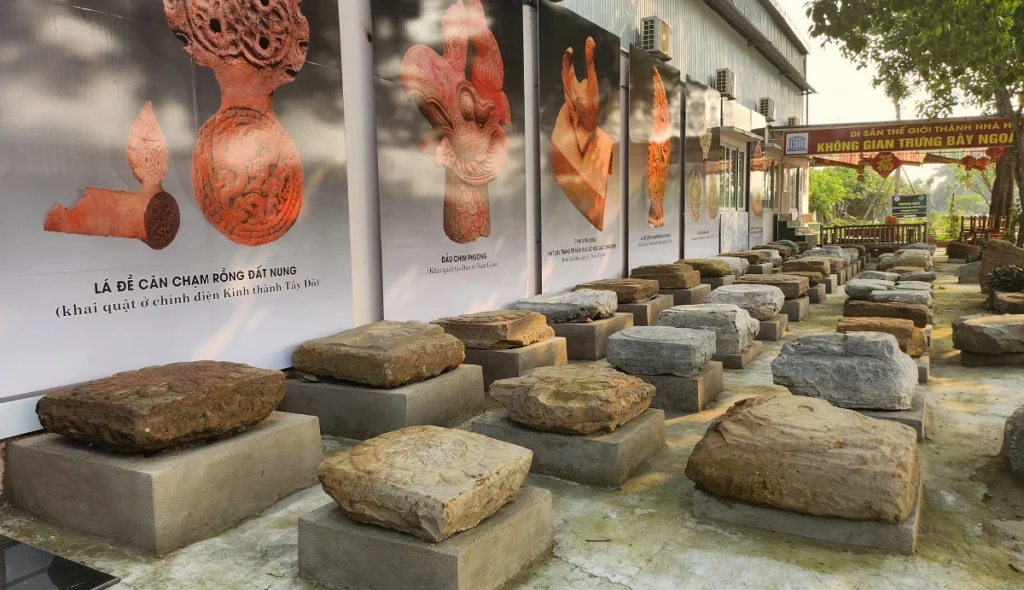
Conclusion
On June 27, 2011, after 6 years of submitting documents, the Ho Dynasty Citadel was recognized by UNESCO as a world cultural heritage. The citadel was also evaluated by CNN as one of the 21 most outstanding heritage sites in the world. Currently, this place has been included in the list of 62 special national monuments by the Prime Minister of Vietnam.
Ho Dynasty Citadel is one of the oldest historical relics in Thanh Hoa built during the Tran Dynasty. This is one of the few remaining stone citadels in the world, so it attracts the attention of many domestic and foreign tourists. Not only does it have a lot of historical significance, but the Ho Dynasty Citadel also has high cultural and architectural value.
Get an opportunity to visit World Heritage Sites in Vietnam through Vietnam E-Visa!